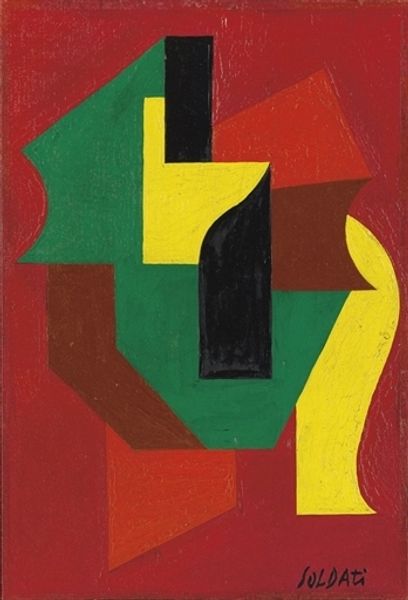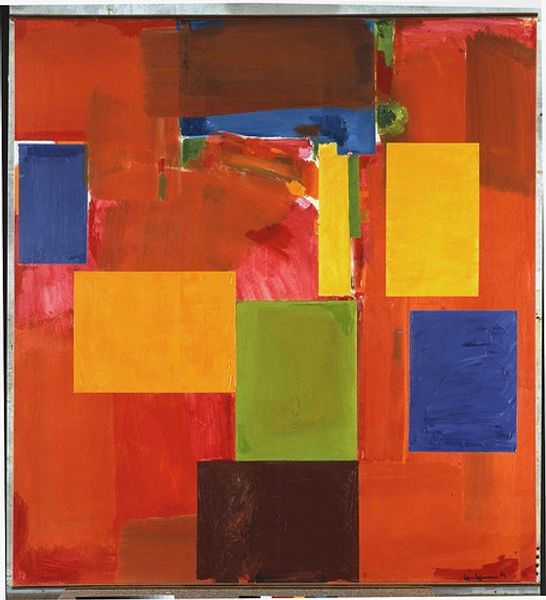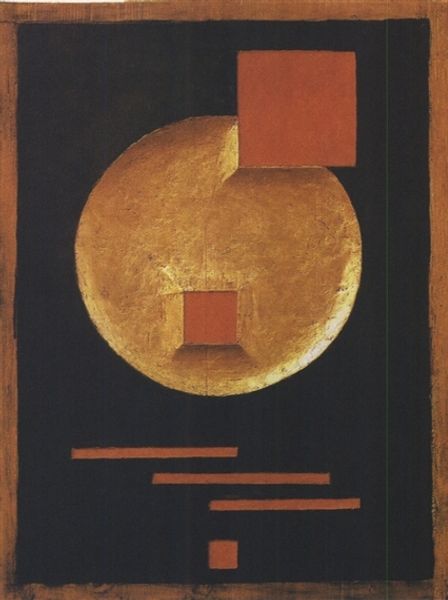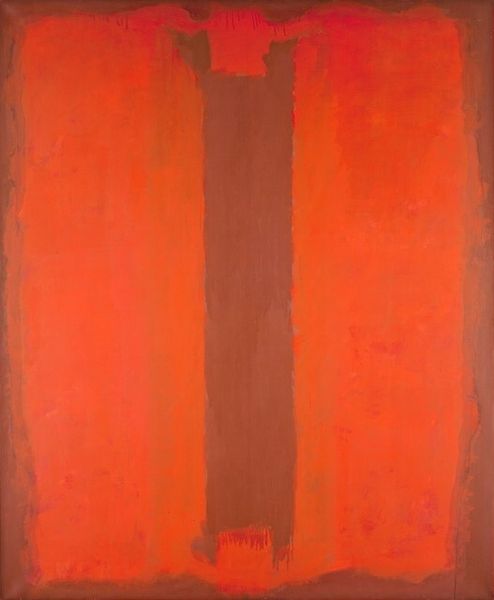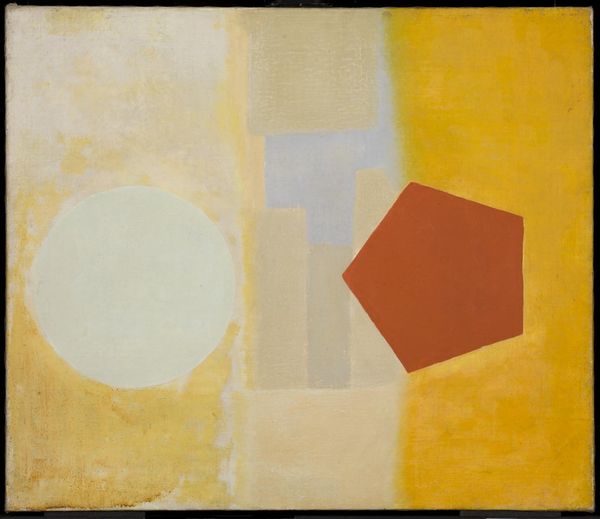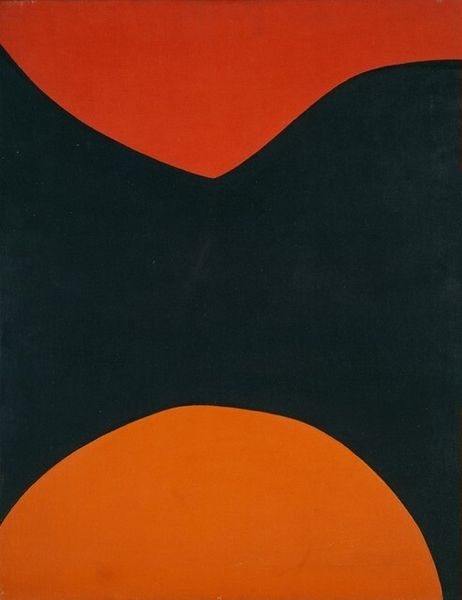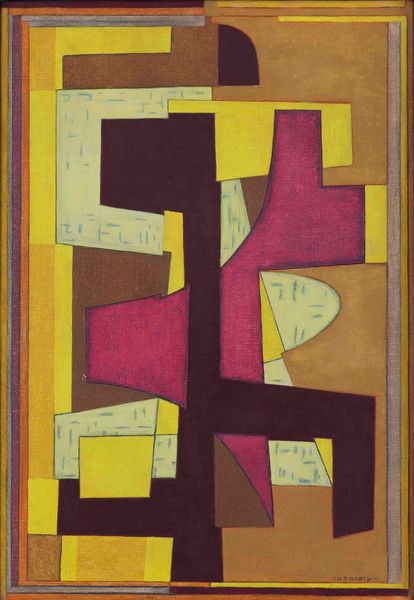
Copyright: Public domain Belarus
Władysław Strzemiński's "Kompozycja architektoniczna" employs elementary forms of square and rectangle, articulated through flat, matte color fields of red, orange, and white. The composition, while minimal, is dynamic: colors interact to create a sense of depth, challenging the viewer's spatial perception. Strzemiński's interest in Unism, striving for art’s autonomy through formal unity, is evident here. He rejected illusionism in favor of pure, non-representational forms that engage directly with the viewer. The architectural reference in the title suggests a structure, yet it remains abstract, devoid of traditional architectural elements. Strzemiński reduces the architectural form to its most basic geometric and chromatic components, prompting a reflection on the fundamental principles of spatial construction. Note the interplay between the sharp edges and the rounded corner, which softens the otherwise severe geometry. This subtly disrupts a static interpretation of the painting, opening up a dialogue between rigid structure and organic form. This tension underscores the painting's dynamic presence, inviting endless interpretations.
Comments
No comments
Be the first to comment and join the conversation on the ultimate creative platform.

